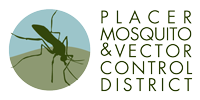Officials at the Placer Mosquito and Vector Control District (PMVCD) announce the beginning of tick season. Results from surveillance activities for Ixodes pacificus, the western black-legged tick, have shown an increase in tick abundance in the foothill areas of Placer County.
The western black-legged tick, also known as the deer tick, is the primary vector for Lyme disease in Placer County, and numbers are usually elevated in the months between December and May. Dr. Mary Sorensen, entomologist for PMVCD, reports that tick abundance is slightly higher than normal compared to last year at the same time. “Deer ticks thrive in high-moisture weather, so we can expect higher numbers during the rainy season,” she states. Although there have been no reports of ticks infected with the Lyme disease agent as of yet, officials still urge caution when in high-risk tick areas. With mosquito numbers and daytime temperatures on the decline, many folks may not be likely to take precautions against vector-borne diseases when engaging in outdoor activities at this time of year.
The good news is, some protective measures that are effective against mosquitoes will also work for ticks. These include:
- Wearing long pants and long-sleeved shirts
- Applying a repellent, such as DEET, with a high enough concentration that is registered for use against ticks (>20%)
Additional protective measures are:
- Stay in the middle of the trail when hiking. Avoid trail margins, brush and grassy areas.
- Inspect yourself frequently for ticks while in tick habitats. Once out of tick habitat, thoroughly check your entire body for ticks up to three days after being in tick areas. Parents should examine their children, especially on the scalp, hairline and skin folds.
For more information on ticks in Placer County, contact the Placer Mosquito and Vector Control District at (888) 768-2343.






